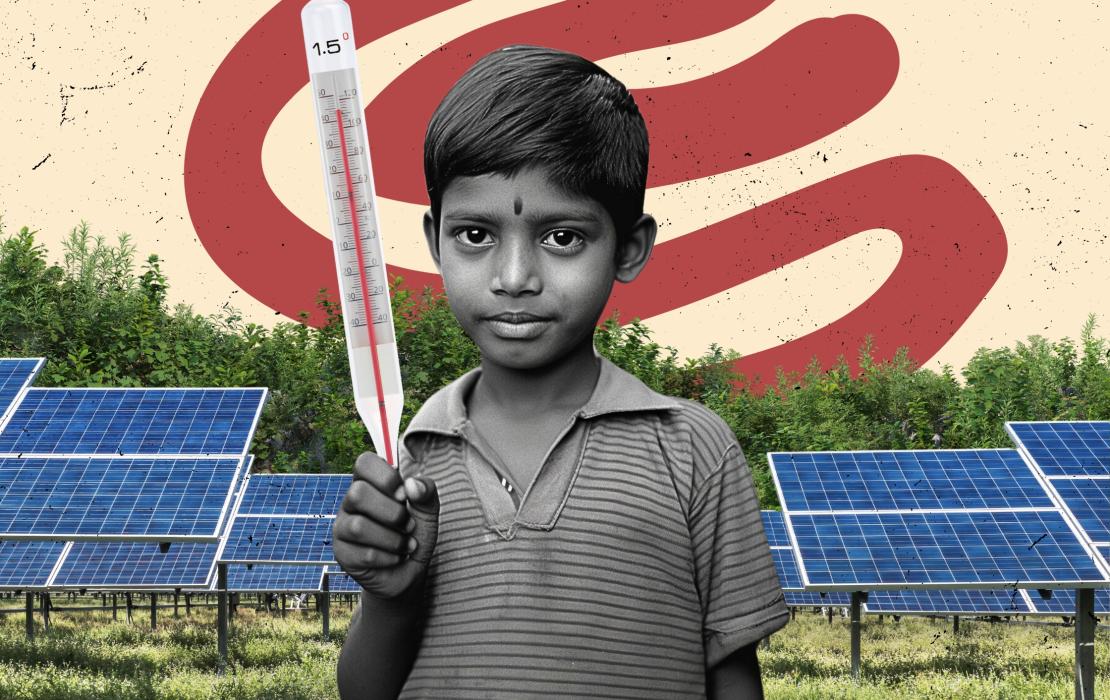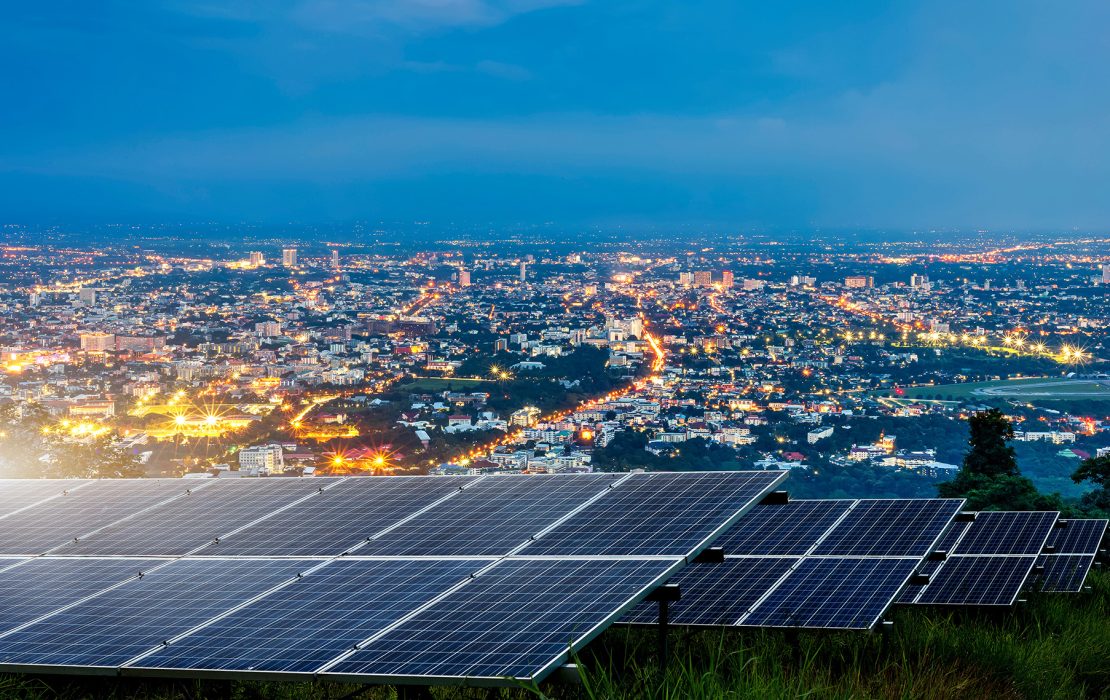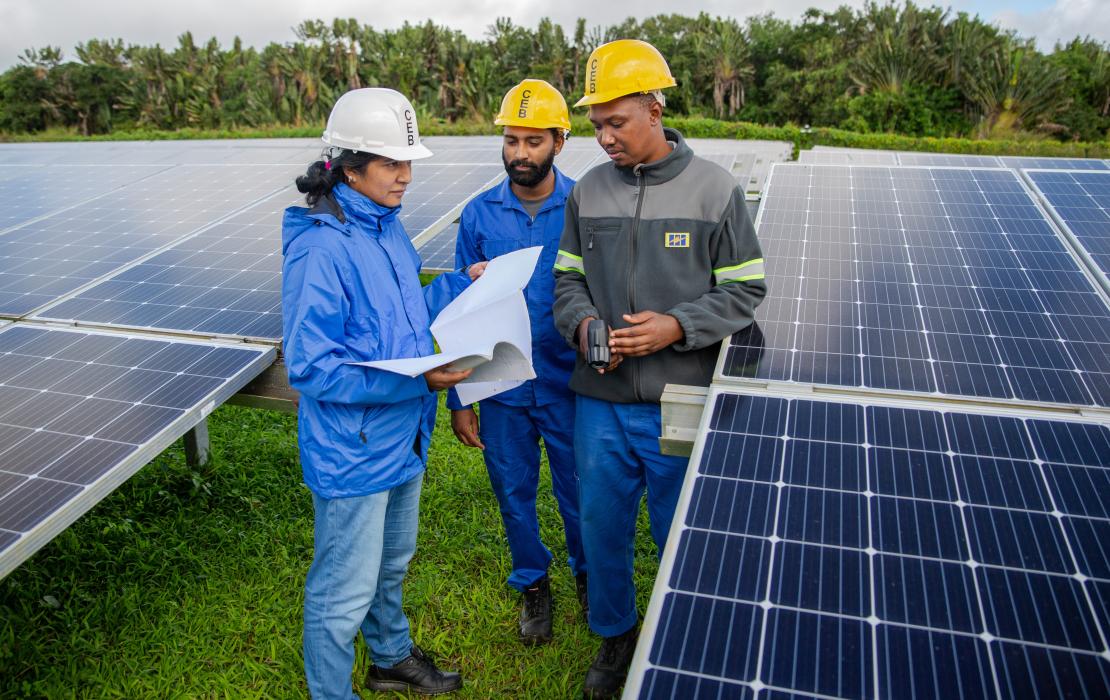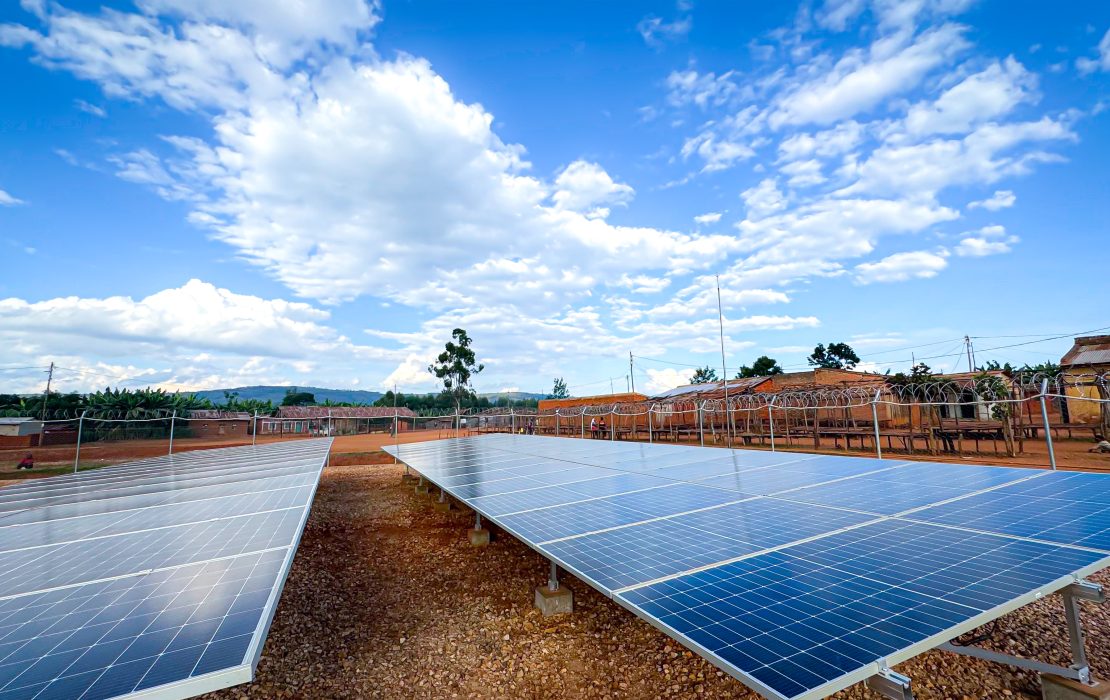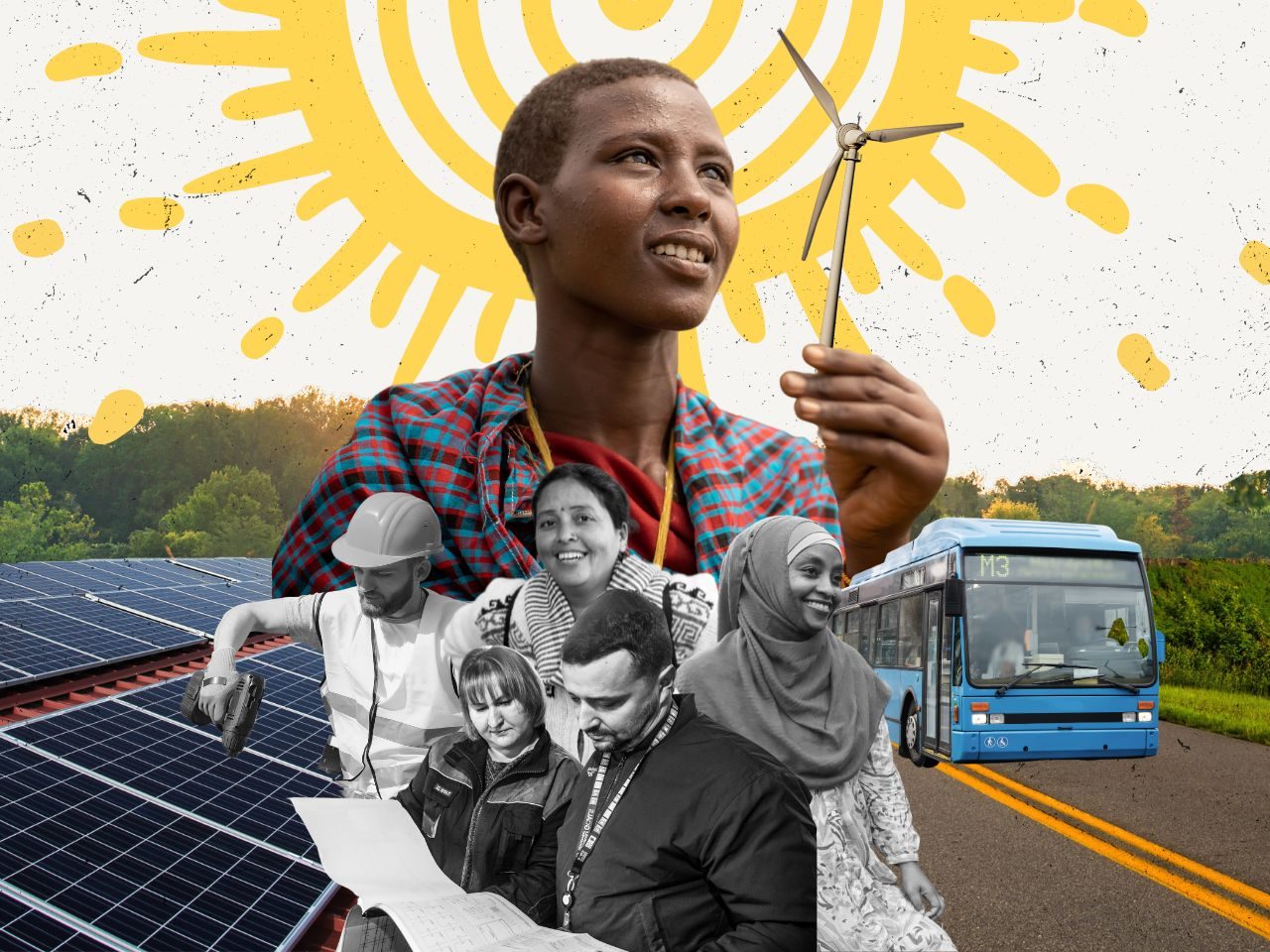
Summary
- The sustainable energy transition is a transformative shift in how energy is produced, distributed and consumed, aiming to move away from fossil fuels towards a system centred on renewable energy sources.
- This energy transition is critical to tackling the climate crisis, as fossil fuels still provide 80 percent of global energy supply.
- Central to the energy transition is the concept of a just transition that prioritizes equity, inclusion and human development.
- Accelerating the energy transition requires scaling up renewable energy production and energy storage, decarbonizing sectors reliant on fossil fuels, accelerating energy efficiency measures, creating an enabling environment and adopting innovative financing mechanisms.
- Digitalization can offer a fast, cost-effective way to accelerate the energy transition.
What is the sustainable energy transition?
The sustainable energy transition is a transformative shift in how energy is produced, distributed and consumed, aiming to move away from fossil fuels towards a system centred on renewable energy sources such as solar, wind, hydropower and geothermal. This shift is critical to tackling the climate crisis, as fossil fuels still provide 80 percent of global energy supply, releasing immense amounts of planet-warming gases, such as carbon dioxide and methane, in the process.
At its core, the sustainable energy transition seeks to transform the global energy system to combat climate change while fostering sustainable development. It involves not only adopting cleaner energy sources but also enhancing energy efficiency, deploying advanced technologies like energy storage, and decarbonizing key sectors such as electricity, transportation and industry.
However, beyond being a technological shift, this transition is a transformative process that prioritizes equity, inclusion and human development. Central to the sustainable energy transition is the concept of a just transition, ensuring fairness and inclusion for all, particularly for those in fossil-fuel intensive industries who stand to lose jobs and income and communities who are more vulnerable to rising costs of living and energy insecurity.
Therefore, the sustainable energy transition not only delivers environmental benefits but also drives innovation, creates jobs and reduces energy poverty. It represents a unique opportunity to address common global challenges like energy access disparities, energy security, inequality and health impacts through integrated and transformative solutions, laying the foundation for a sustainable, inclusive and resilient future.
Why does the sustainable energy transition matter for climate action?
The current energy system is a major driver of global climate change, accounting for around 75 percent of total greenhouse gas emissions. As temperatures break records year after year, transforming how we produce and consume energy is essential.
Under the Paris Agreement, a legally binding international treaty on climate change, countries have committed to deep, rapid and sustained reductions in greenhouse gas emissions to limit global warming to well below 2° C above pre-industrial levels, preferably to 1.5° C. The world’s ability to meet this goal hinges on the energy sector’s ability to reach net-zero emissions by 2050.
The case for action has never been stronger. The landmark decision from the first Global Stocktake, adopted at COP28 in Dubai in 2023, outlines transformative energy-related pathways and approaches that countries must pursue, including:
- Tripling global renewable energy capacity and doubling the global annual average rate of energy efficiency improvements by 2030;
- Transitioning away from fossil fuels in energy systems, in a just, orderly and equitable manner;
- Phasing out inefficient fossil fuel subsidies that do not address energy poverty or just transitions.
The decision highlights the urgency to accelerate global efforts towards a net-zero emission energy system, one that produces little or no carbon emissions from fossil fuels and industrial processes, before 2050.
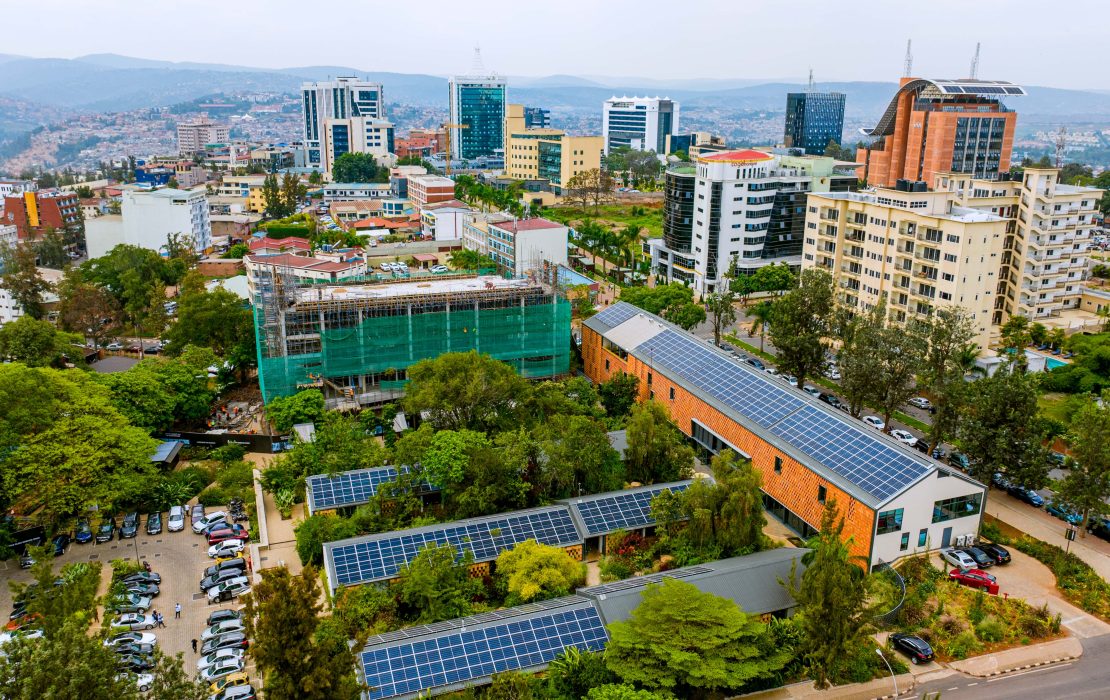
Solar panels are transforming energy production in Kigali, Rwanda. Photo: Mucyo Serge / UNDP Rwanda

Electric motorbikes help reduce emissions in the tourism sector in Viet Nam. Photo: UNDP Viet Nam
Are we on track to achieve the sustainable energy transition and meet the goals of the Paris Agreement?
Despite commitments through Nationally Determined Contributions (NDCs), Long-Term Low Emission Development Strategies (LT-LEDS) and net-zero goals, the current efforts by governments and the private sector are not enough to keep global average temperature rise below 1.5°C.
Current pledges, including the COP28 commitments, could cut emissions by 3 percent by 2030 and 51 percent by 2050 compared to 2022 levels. At this rate, global energy-related emissions would reach 35.2 billion tonnes of carbon dioxide (GtCO2) in 2030 – far above the 23 GtCO2 required to keep the world on a 1.5°C pathway. While this represents some progress, it falls well short of what is needed to avoid the most catastrophic impacts of climate change.
Without a swift energy transition, it will be impossible to meet the vast emissions reductions needed for climate change mitigation. The next cycle of updated Nationally Determined Contributions (NDCs) offers an opportunity for countries to lay out measurable and actionable energy sector targets that are well aligned with existing energy, climate and development policies, and highlight investment opportunities across both public and private sectors.
What are the priorities for accelerating the sustainable energy transition?
Ensuring a just transition
The sustainable energy transition can bring disruptive changes, such as higher costs of living, job displacement and loss of income or increased energy insecurity. It is important that countries act to mitigate these unintended impacts, for example, in regions with concentrated industrialization and on vulnerable populations. A just and inclusive transition is a powerful catalyst for creating green jobs, adapting education systems, building inclusive and effective institutions and advancing social, environmental and economic justice.
Scaling up renewable energy production
Decarbonizing the energy sector by rapidly scaling up renewable energy sources such as solar, wind and hydropower is critical – not just for cutting emissions but also for expanding energy access in underserved communities. Currently, renewable energy is the cheapest option for new electricity in almost every country in the world. Projections show that renewables could account for over 90 percent of global electricity generation by 2050, accelerating the path to a net-zero energy system. Clean electricity is also the foundation for transforming other sectors, from industry to transportation.
Decarbonizing sectors reliant on fossil fuels
Some sectors that rely heavily on fossil fuels and contribute significantly to global emissions include transportation (13.7 percent), manufacturing and construction (12.7 percent) and buildings (6.6 percent). Electrification powered by clean energy is the most effective pathway to decarbonize some of these areas. For example, renewable-powered electric vehicles can replace gasoline-powered cars, heat pumps can provide energy-efficient heating and cooling for buildings, and induction cooktops offer cleaner alternatives to biomass and gas stoves.
However, not all sectors can be fully decarbonized through electrification alone. Some hard-to-abate sectors including aviation, long-distance transport, shipping and industries like steel and cement production require energy-dense fuels or processes that electrification cannot currently address efficiently. Innovation and funding for research and development are required to ensure that these sectors are also on a path to decarbonization.
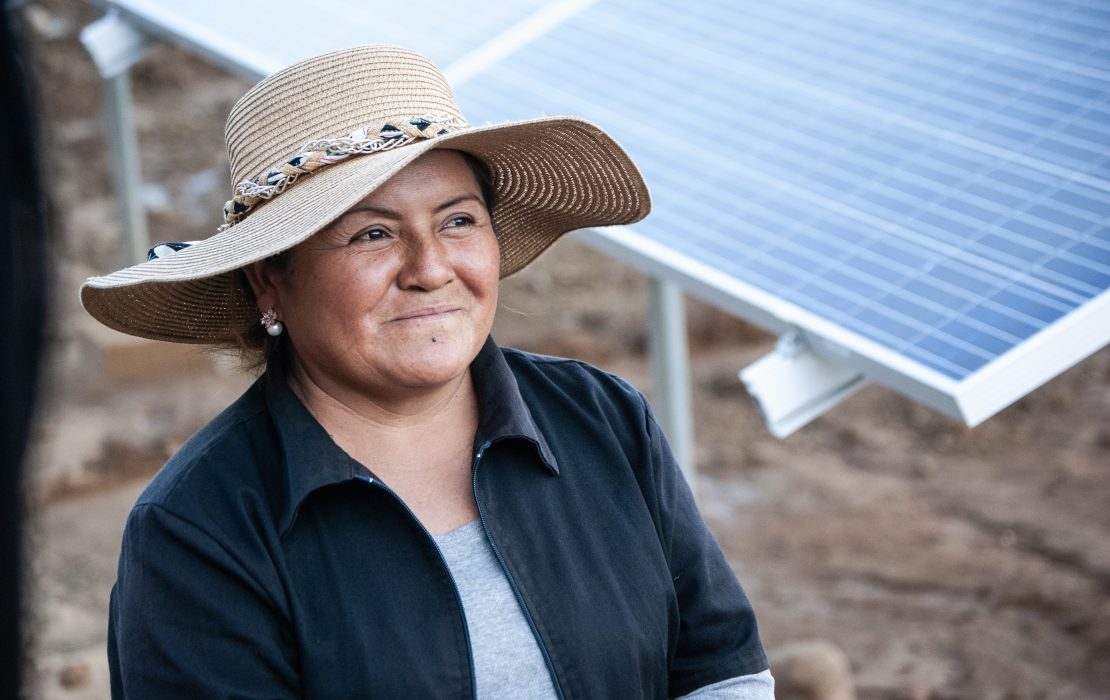
Solar energy is changing women’s lives in remote communities in Bolivia. Photo: Practical Action Bolivia
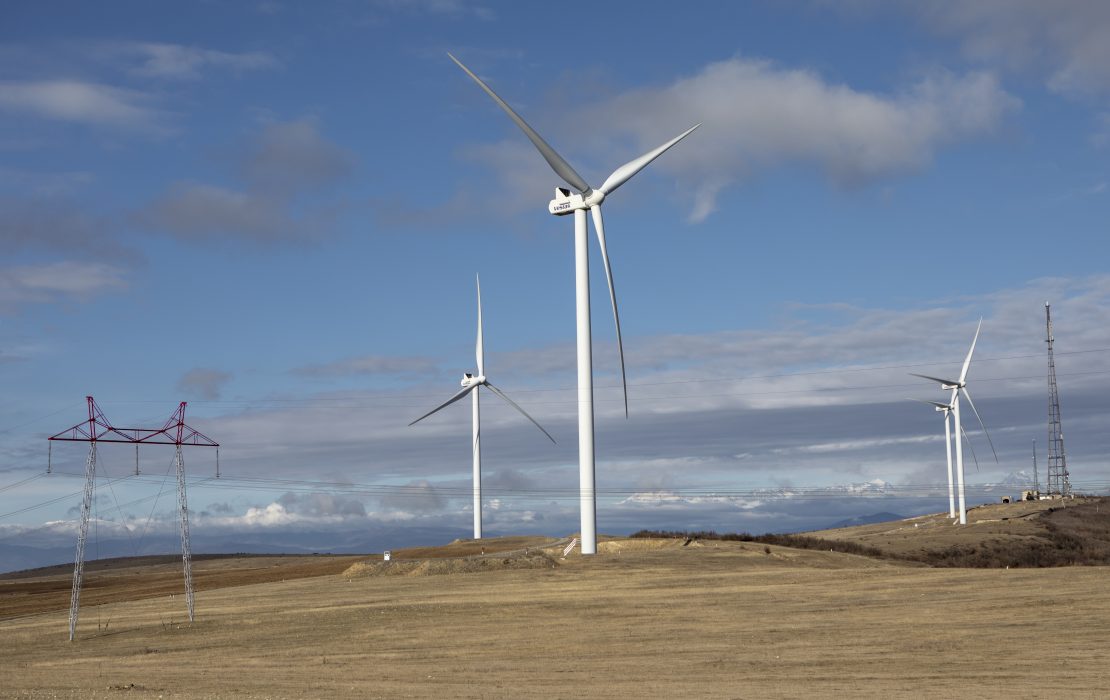
Wind farms help advance the sustainable energy transition in Georgia. Photo: Nino Zedginidze / UNDP Georgia
Scaling energy storage and managing the critical minerals value chain
The rapid expansion of renewable energy and the rise of electric vehicles demands a corresponding rise in energy storage technologies to ensure grid stability and reliability. Batteries, in particular, are emerging as critical enablers of the clean energy transition, facilitating seamless integration of intermittent solar and wind power. AI-managed storage can tip the economic equation to unlock investment in renewable energy. Moreover, the energy transition is driving soaring demand for critical minerals like copper, lithium, and cobalt, essential for renewable energy technologies. However, long lead times for mining projects and reliance on a few, mostly low-income, countries create supply chain vulnerabilities and geopolitical risks. Without safeguards, increased extraction could exacerbate environmental damage and social inequities, particularly affecting Indigenous Peoples and local communities. To ensure a sustainable transition, strong regulations, circular economy practices, and responsible sourcing must be prioritized.
Accelerating energy efficiency measures
Another critical aspect of the sustainable energy transition is energy efficiency – using less energy to achieve the same level of output or performance, whether in buildings, industries, transport, or household appliances. By introducing energy-efficient solutions such as well-insulated buildings, fuel-efficient vehicles or modern appliances like refrigerators, lightning and electric cook-stoves, economies and communities can immediately benefit. These measures not only reduce energy consumption and costs but also strengthen energy security by lowering reliance on energy imports and minimizing strain on energy systems.
Creating an enabling environment
The energy transition in emerging markets and developing economies (excluding China), which currently attract just one-fifth of global clean energy investments, is constrained by systemic barriers that require strong, coordinated action. Creating a stable enabling environment with policy de-risking is central to attracting clean energy investments in these markets and economies. Many of these countries have articulated renewable energy targets in their NDCs, but translating these into actionable investments demands greater policy coherence. Mechanisms like tax incentives, feed-in tariffs and streamlined permitting processes have demonstrated success in mitigating investment risks. Yet, fossil fuel subsidies continue to overshadow these efforts in many countries. Reforming these subsidies and implementing cost-reflective energy pricing must be paired with measures to protect vulnerable populations.
Adopting innovative financing mechanisms
While public finance is essential for advancing infrastructure projects, particularly those that may not be commercially viable on their own, innovative financial mechanisms are necessary to stimulate private sector investment. Financial de-risking tools are necessary for addressing risk factors such as inflation, political risks, expropriation, currency fluctuations, and underdeveloped capital markets that are characteristic of transitioning regions. One effective approach is blended finance, which enhances investment risk-return profiles by combining public and private capital through mechanisms like concessional finance, sovereign guarantees, and political risk assurances.
Leveraging the triptych of digital, data and AI
Meeting the goals of the Paris Agreement demands bold actions that leverage the potential of digital innovation, data and AI. With energy demand projected to increase by 18 percent through 2050 and energy management inefficiency at 60 percent, digitalization offers immense potential to optimize the entire energy value chain, from renewable energy production and storage to more efficient distribution and consumption. These are powerful tools to speed up the energy transition, helping to identify the best investment opportunities, guiding smart decision-making, and driving breakthroughs in renewable energy. In fact, if scaled effectively, digital technologies could reduce emissions by 20 percent by 2050 in the energy, materials and mobility sectors, the three largest contributors to global emissions. In other words, digital innovation could be the ‘low-hanging fruit’ that can offer a fast, cost-effective way to accelerate the sustainable energy transition.
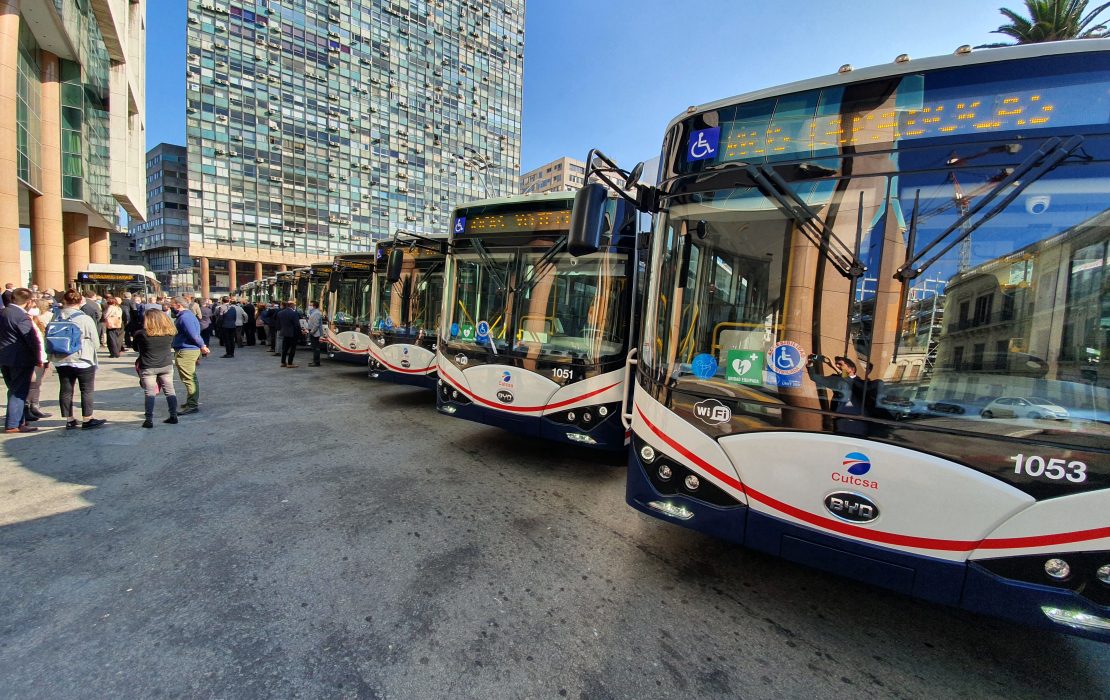
Uruguay deployed 150 electric buses for public transportation in major cities. Photo: UNDP Uruguay
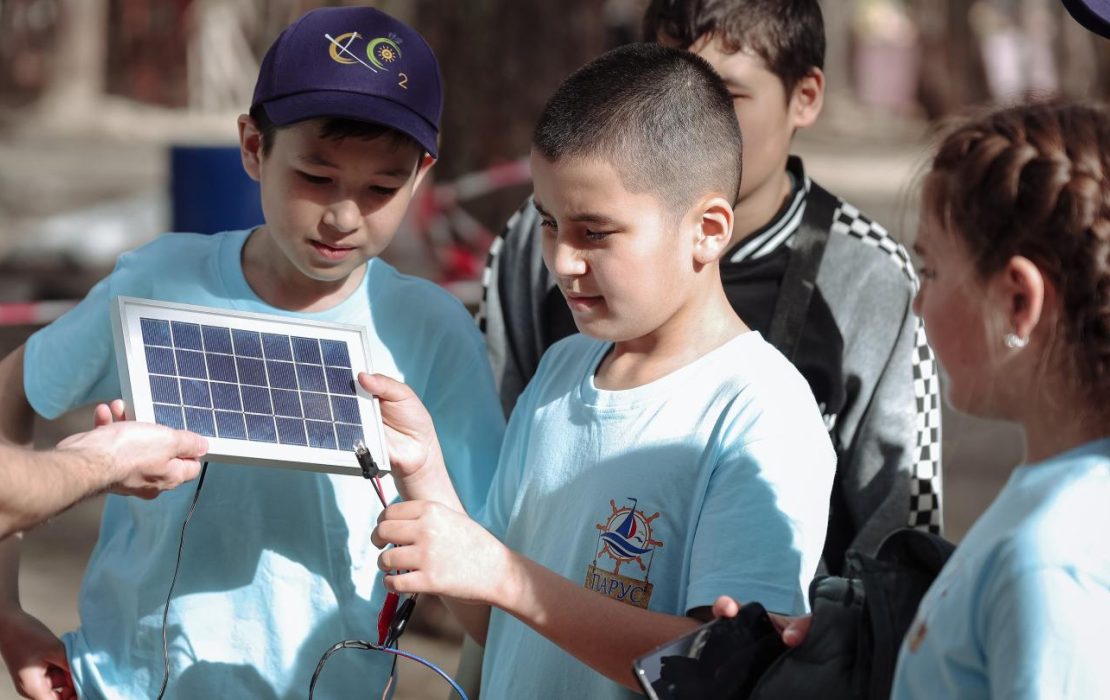
Children learning about renewable energy and energy efficiency in Kazakhstan. Photo: Batyr Aubakirov / UNDP Kazakhstan
How is UNDP supporting the sustainable energy transition?
UNDP partners with countries and development actors to transform energy systems by driving policy, technology and financial shifts that support sustainable development. UNDP works to ensure a just energy transition—one that distributes benefits equitably while minimizing negative impacts on the poorest and most vulnerable communities, leaving no one behind. UNDP’s work also includes providing technical support and capacity building to governments, businesses, and communities, ensuring they have the tools and knowledge to adopt and sustain clean energy systems effectively.
With support from UNDP and the Global Environment Facility (GEF), Uruguay repurposed fossil-fuel subsidies to cleaner technologies to reduce emissions in the transportation sector and deployed 150 electric buses, including 33 in Montevideo. While the removal of subsidies often risks social unrest, the project demonstrated how effective stakeholder engagement and visible benefits, like cleaner, more reliable transportation, can foster public acceptance. This initiative not only supported institutional capacity-building and scalable models for sustainable mobility but also leveraged Uruguay’s remarkable 98 percent renewable energy mix to maximize environmental and economic benefits, aligning seamlessly with its NDC. Similar projects to advance sustainable transportation are underway in Jamaica, Cuba, Paraguay, China, Peru, Egypt, Lebanon, Bangladesh, Uzbekistan and Kazakhstan.
In Kazakhstan, UNDP has partnered with local governments to retrofit housing units with energy-efficient systems, focusing on vulnerable populations such as low-income families. Upgrades like thermal insulation, double-glazed windows, and modern heating systems have reduced heat loss and cut heating costs. This initiative not only improved living conditions but also aligns with Kazakhstan’s national energy targets, contributing to significant greenhouse gas emission reductions and sustainable urban development.
In Tanzania, with support from the GEF, UNDP is supporting efforts to curb deforestation and reduce fossil fuel dependence through increased market access to clean cooking solutions. Project activities aim to ensure that 5,000 new households and enterprises adopt digitally enabled electric cooking devices, with targeted support provided to enhance affordability.
In Mauritius, UNDP is supporting the government to meet its NDC target of using renewables to supply 60 percent of the country’s electricity needs by 2030. With funding from the Green Climate Fund (GCF), an 18 MW utility-scale battery energy storage system was installed to enable 50 MW of intermittent renewable energy to be connected to the grid, helping to avoid 81,000 tonnes of emitted carbon dioxide annually.
*
Find out more about UNDP’s work on energy at undp.org/energy.
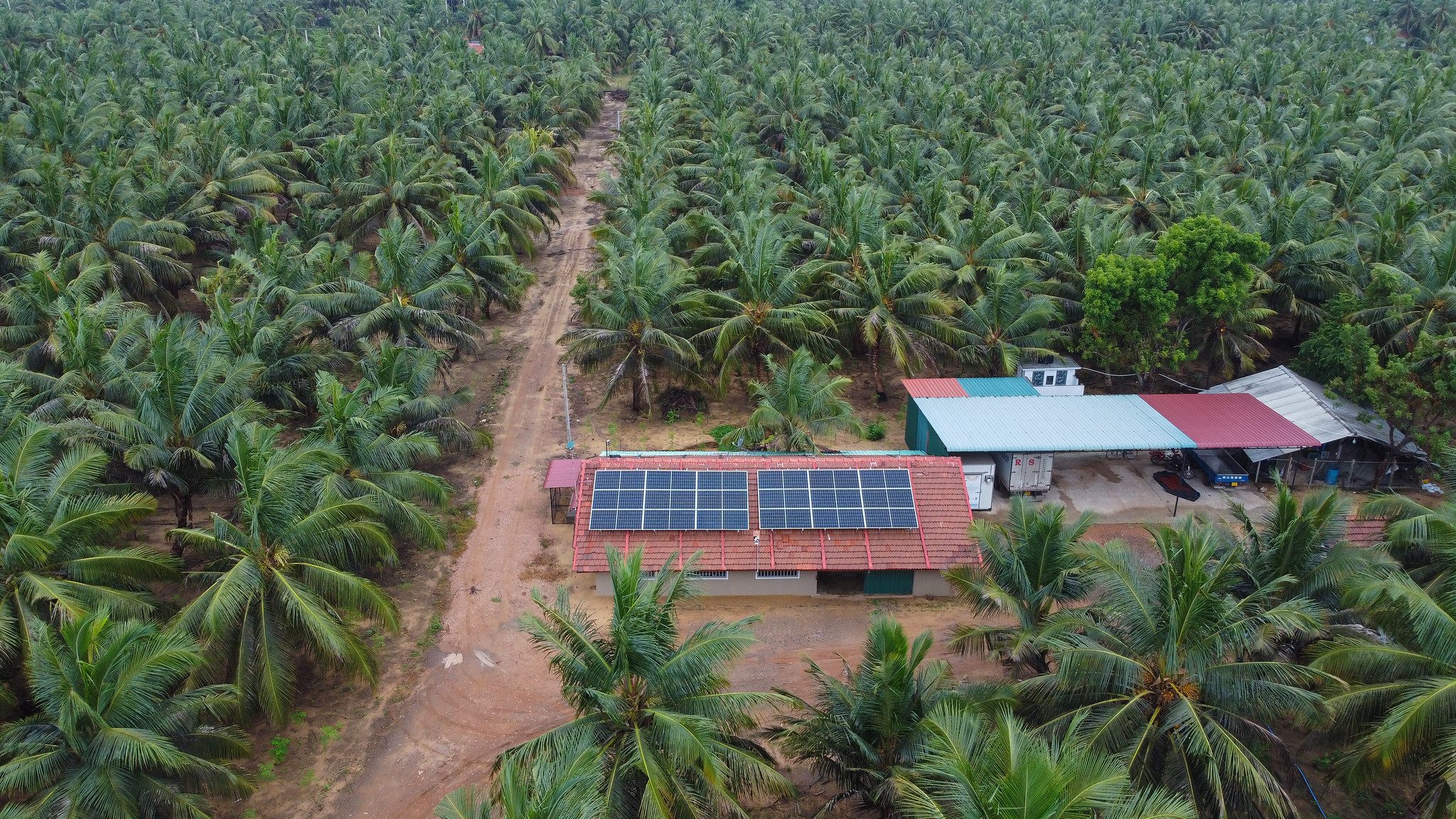
Savings generated by renewable energy helps farmers in Sri Lanka invest in new ventures. Photo: UNDP Sri Lanka
